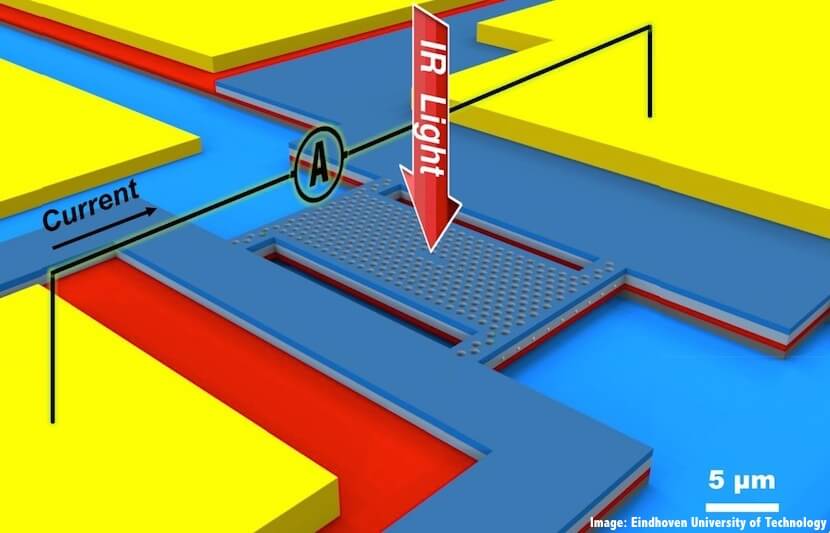Just like the tricorder popularized by Star Trek, smartphones outfitted with a micro-spectometer recently developed by researchers at the Eindhoven University of Technology (TU/e) in the Netherlands could be used by users to glean crucial information from the environment around them.
The new micro-spectrometer is small enough to fit in a cell phone, but precise enough to detect the quality of the air or to determine the freshness of food, the level of blood sugar or the malignancy of a tumor, and so on.
This micro-spectrometer is just as accurate as the standard tabletop models. The developers of this new technology designed it with the goal of creating a micro-spectrometer capable of integrating with existing smartphone technology as the camera has.
A spectrometer determines the composition of a given object by analyzing the light reflected and absorbed by it. Since all visible matter, by definition, reflects light, a spectrometer can be used to determine the composition of virtually anything.
However, since traditional spectrometers have to divide the light into different frequencies (infrared, ultraviolet, microwave, etc.) and analyze each frequency separately, they had to be large devices.
The researchers at TU/e shifted this paradigm by designing a spectrometer that’s a fraction of the size but just as accurate as its larger counterparts.
Their new device uses a “photonic crystal cavity” to trap lightwaves in a space only a few micrometers wide. To show the sensor’s usefulness and range of ability, the researchers used it to detect motion and then to determine the makeup of various gases.
“A spectral sensor on a smartphone will enable consumers to gain information on the environment around them (food, air quality, etc), beyond the capabilities of the eyes (since these spectrometers can work in the near-infrared and mid-infrared as well),” said Andrea Fiore, professor of applied physics at TU/e, who supervised the research along with associate professor Rob van der Heijden.
This would mark a new era for the capabilities of the smartphone, giving the digital pocket knife another tool by which to document and provide information about the world we live in. Just as the fusion of the camera with the phone gave all mobile phone users the ability to document anything that occurs, this innovation would allow smartphone users to make their own scientific deduction of the composition of a given object.
Fiore expects it to take at least five more years to integrate the sensor’s into existing smartphone design, as the frequency range currently covered is still too small, according to a statement included in TU/e’s press release. The team plans on adding a light source to the micro-spectometer, so it could operate without external light sources, and on broadening the detectable spectrum, which currently covers only a few percent of the near-infrared, the most common spectrum.
Going forward, the team’s “key goal will be the integration of appropriate software to make good use of the available data — apps which can interpret the spectral information using available databases and provide the required information to the user,” he said. “This is already starting to happen.”
The study is published in Nature Communications.



